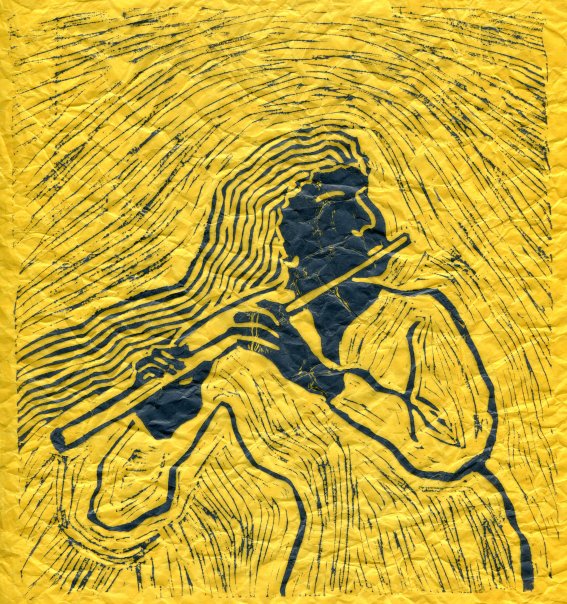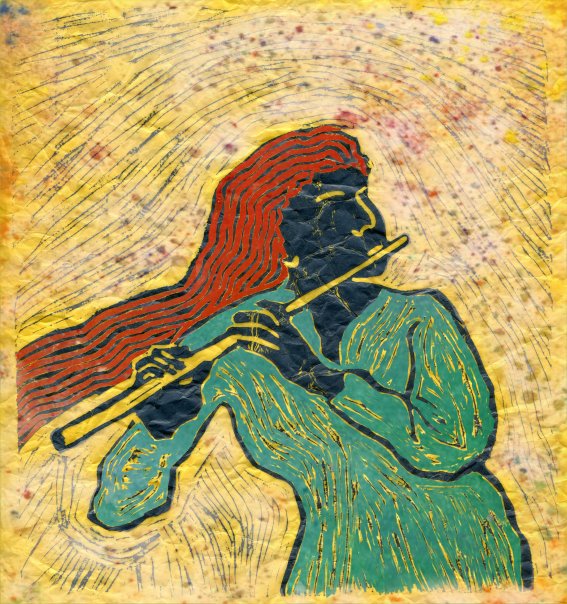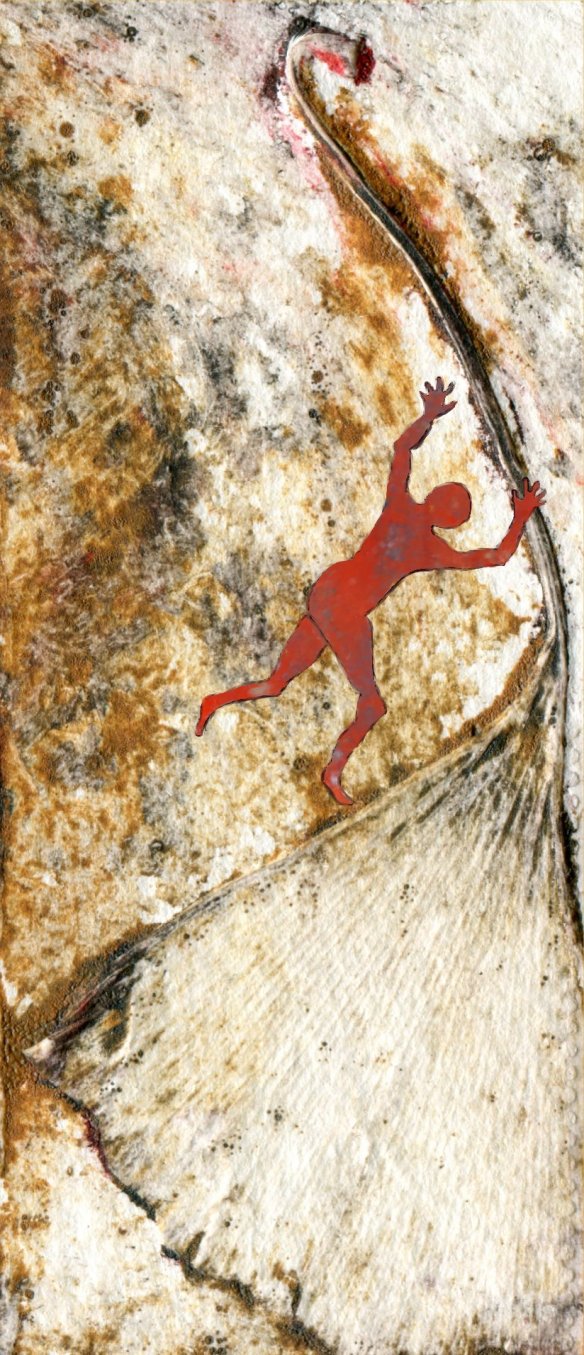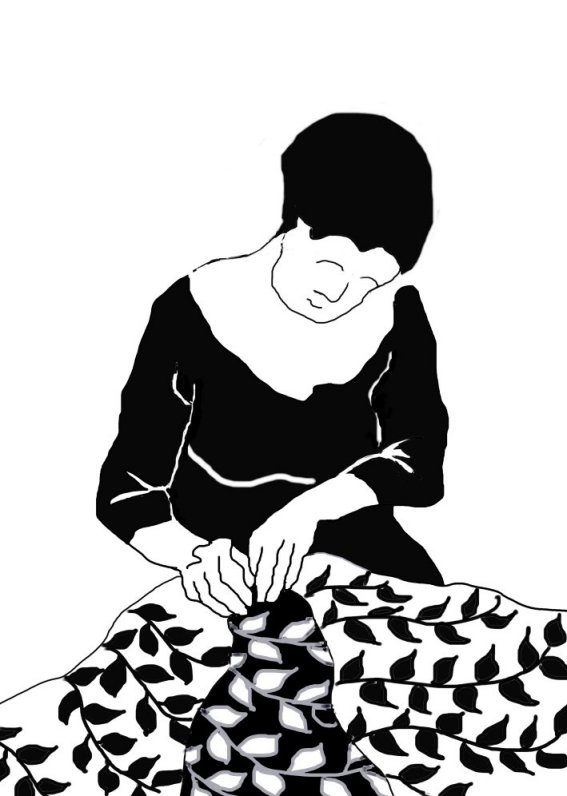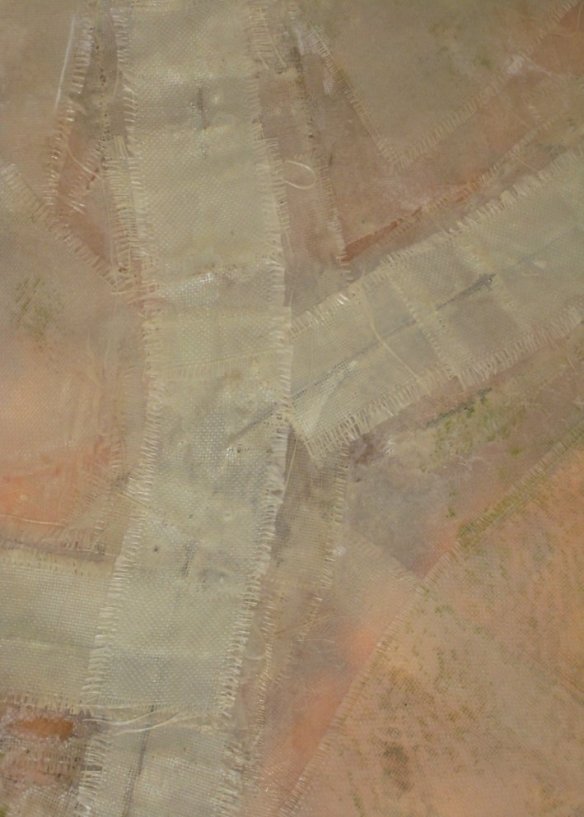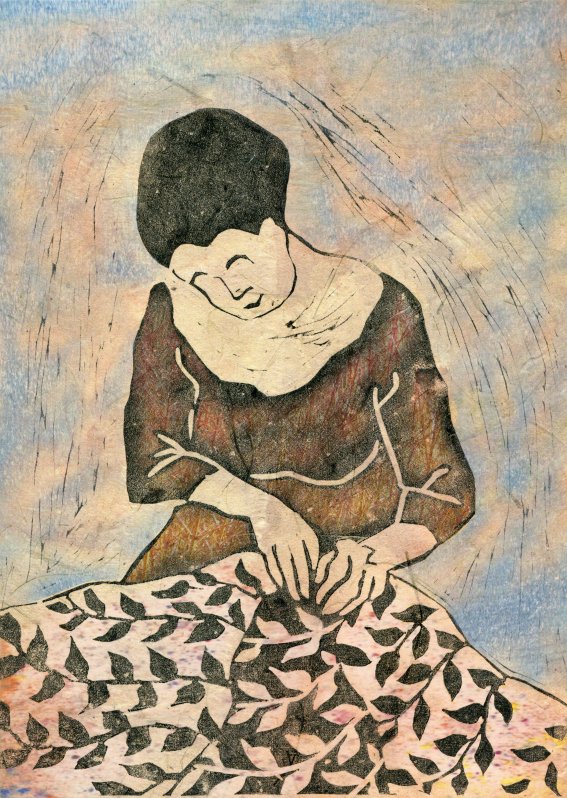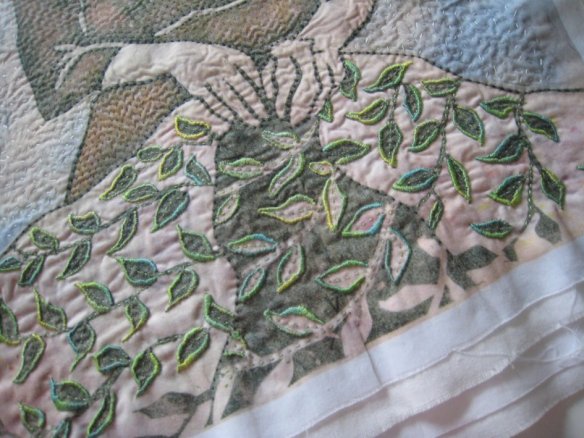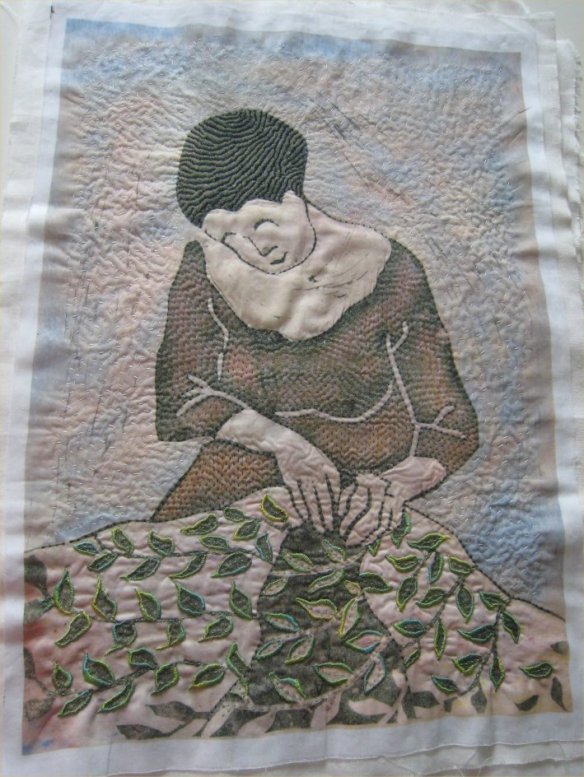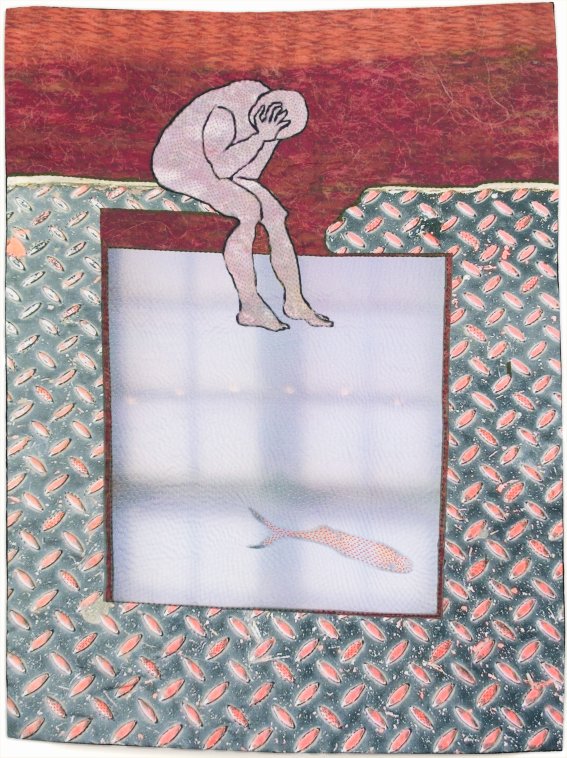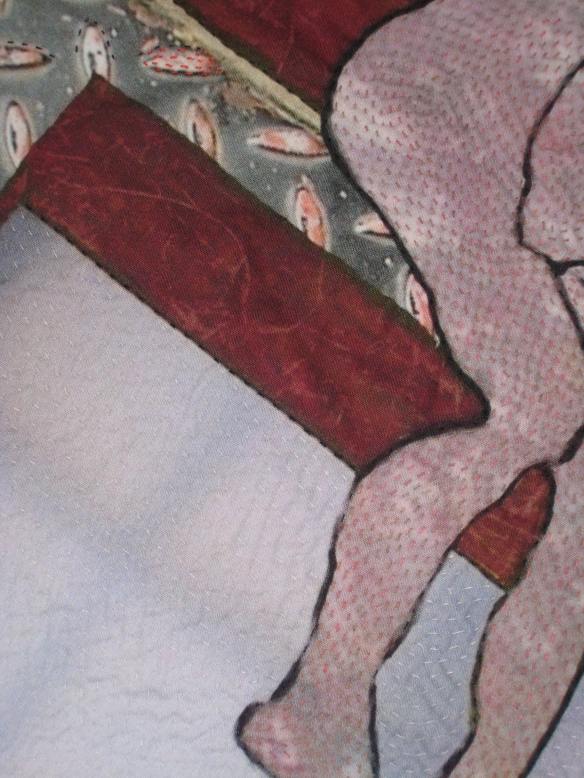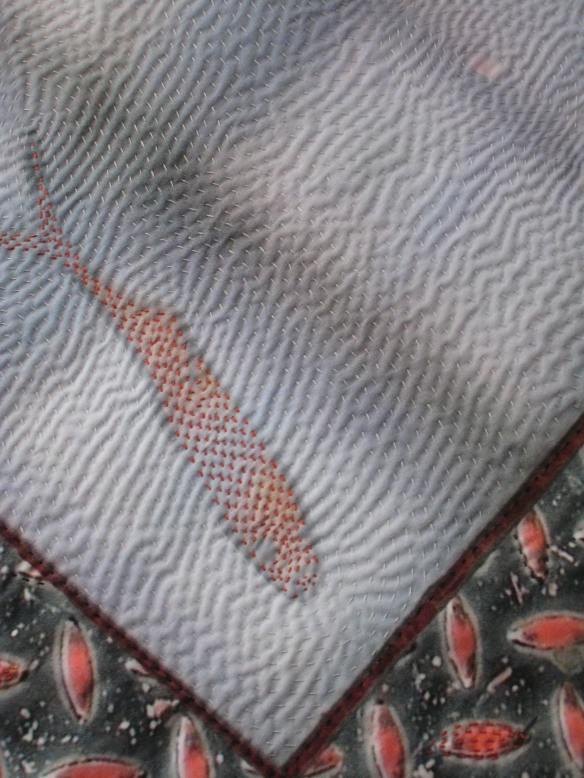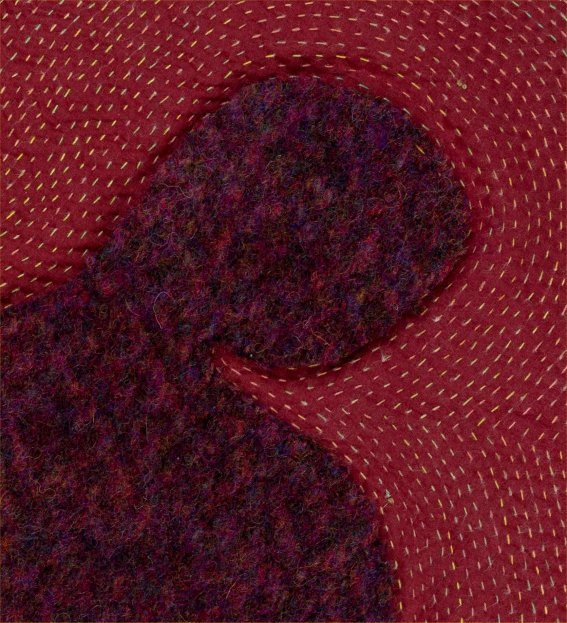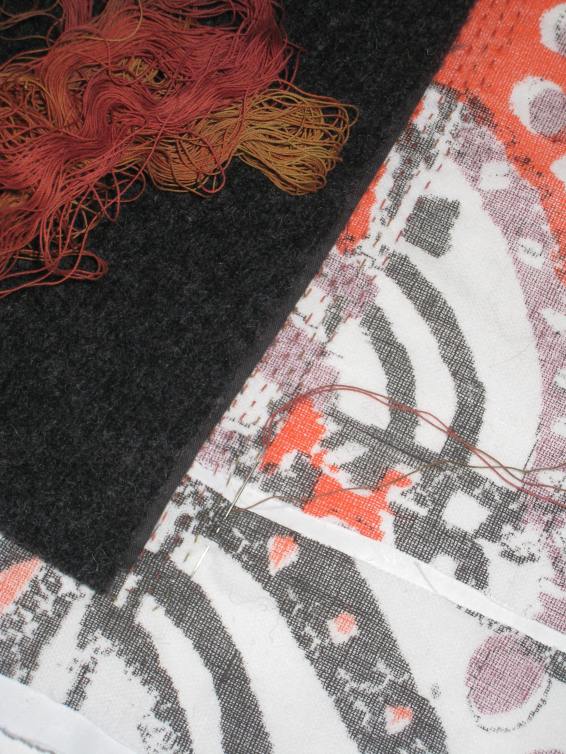Somehow this new year feels far more like part of a continuum rather than a fresh start, or even a reboot. I am still more positive than negative; but I must admit to some evening out. This extra blog was started in a fit of enthusiasm and optimism, and often I have thought of shutting it down – goodness, one blog should be enough, surely! But, not exactly inertia, but something close to it perhaps, keeps me hanging on, – hoping….
The final couple of months of last year found me oppressed and depressed because of personal circumstances as well as the political ones here in the UK. In order to distract myself with work rather than simply sinking into detective novels (although I did that too) I used a book-making offer from Photobox to spur myself into putting something together from my mass of sea and shore-related image files. And just in case anyone is interested, I am outlining my progress below.
I wanted to see what a Lay Flat book would be like at displaying a full double page spread – to show one continuous horizontal image, with no hiccup in the middle, and no surrounding border. The sizes on offer were not really what I would have chosen, in that the A template is not a very dynamic one – but given I did not want a huge book, I went for the A4 horizontal. At least the open double page spread would provide a more interesting format.
Depression can seep negative thoughts into planning, and so I did not want to spent too much time thinking about the process. It would be too easy simply to give up – and indeed that is why I had pre-bought the book production: I had to design the book within a set time, or lose the money. I wanted the design to suggest itself to me, and instinct to take over. There was to be no pressure other than time, and that was not too onerous in that I had a month from the company, and also I knew that my husband would be away for five days within that month. This was an opportunity for serious play.
My idea was to make composite images, digital collages to incorporate every piece of work inspired by sea or strand. The work would comprise not only finished stitched pieces, but also digital sketches and designs. The size of each piece of work would vary according to how I wanted to incorporate it in the collage, and thus large quilts would not necessarily be large on the page, etc. So, I reckoned that I needed:
- a selection of sea backgrounds
- a selection of strand backgrounds
- my digital images
- a range of abstract elements
- words
Of those ingredients the digital images and the sea backgrounds were the easiest to provide. For the latter I cropped horizontal elements from scanned prints of an etching I’d made years ago inspired by elements of plankton.
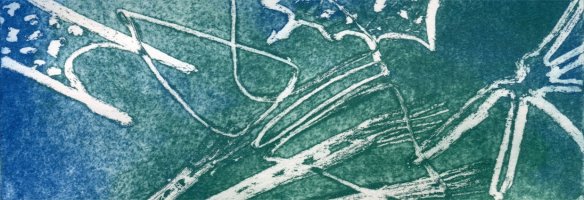
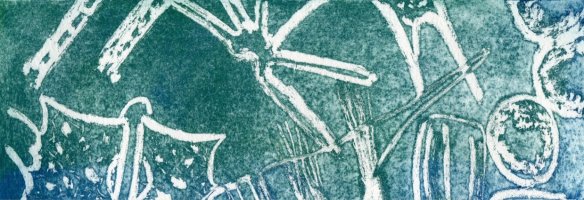
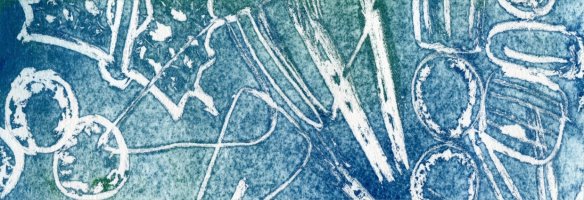
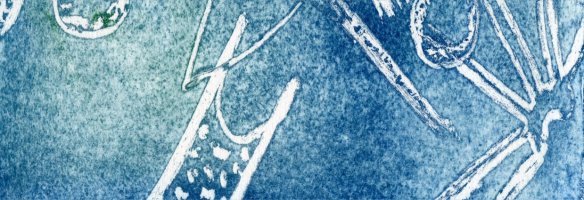
That was fine as far the sea background was concerned, but I did not already have a similar source for the strand backgrounds, so I decided to make those using soft pastels. Taking pebbles which I’d picked up at Hunstanton as my starting point, I made several horizontal strips which I then scanned and cropped to the same size as the sea backgrounds.
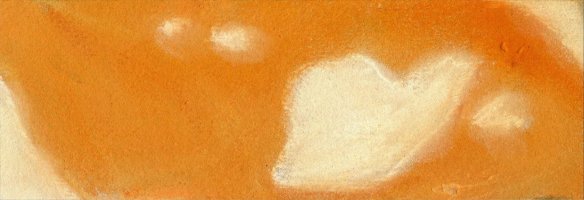
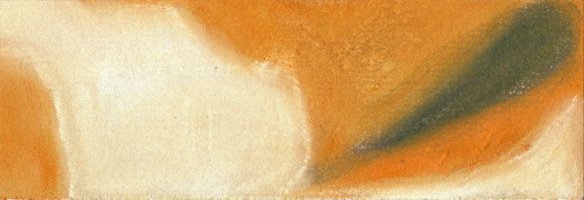
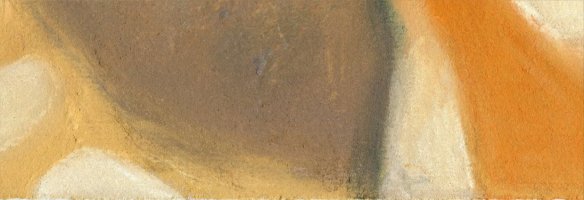
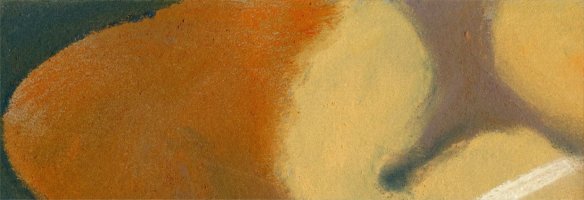
These two were not sufficient. The images of my work were from necessity in rectangles, so I needed random shapes to provide dynamic in the compositions. My obsession with the sea provided a solution.
From time to time I worry that my not having a sketchbook is detrimental to my progress, and I will make a huge effort. A friend had given me a concertina sketchbook, and I’d filled it with collage and scribbles inspired by the sea. This was just what I needed, so I scanned it. Fortunately I had also added words to my concertina collage, so that provided the final ingredient.
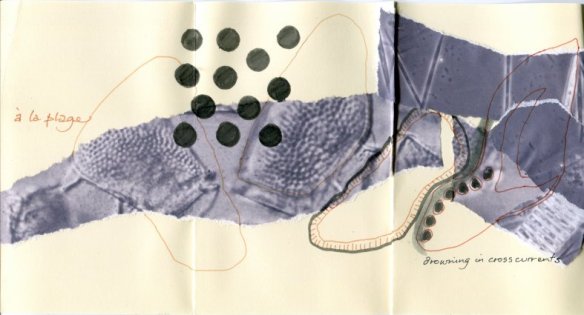
The rest was fairly straightforward – hard work in some senses, because the scanned concertina collage as you can see above was full of unruly elements – folds, shadows, bulges, etc. because of the nature of the sketchbook – but the digital collaging process is a fundamental tool for me. It was particularly satisfying to be able to use images which had not progressed beyond digital design, or even doodle. The latter (such as the one below), even though in only preliminary stages of design, and perhaps will never progress further, could be used within a larger collage.
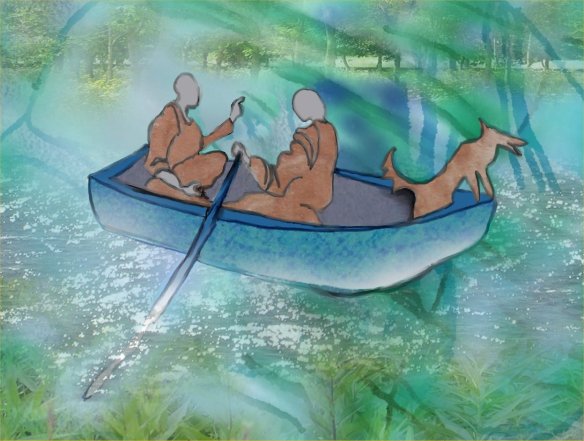
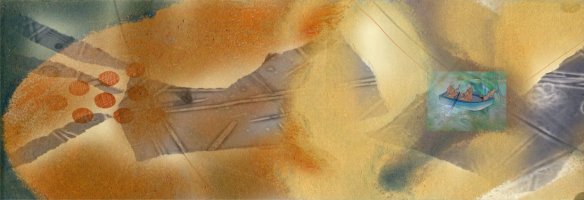
On the whole I was pleased with the experiment – you can see more double page spreads on my Threading thoughts blog – but I’m kicking myself for making the text too big. The lay flat format works – except if like me you add double page spreads so that the book is too wide for its spine! My determination to include all my sea work made 17 double page spreads in the end, and I guess that about nine to eleven spreads would have been ideal for this process – I had to add extra pages to the ones offered. Nonetheless, I am so glad that I did it – and the whole process achieved its purpose on so many levels.
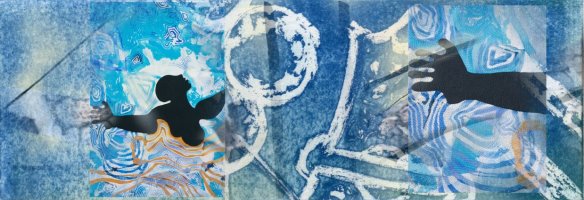
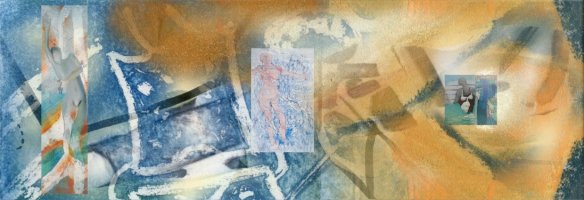
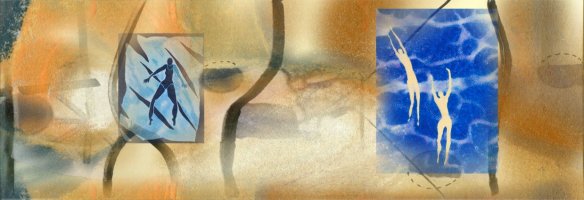


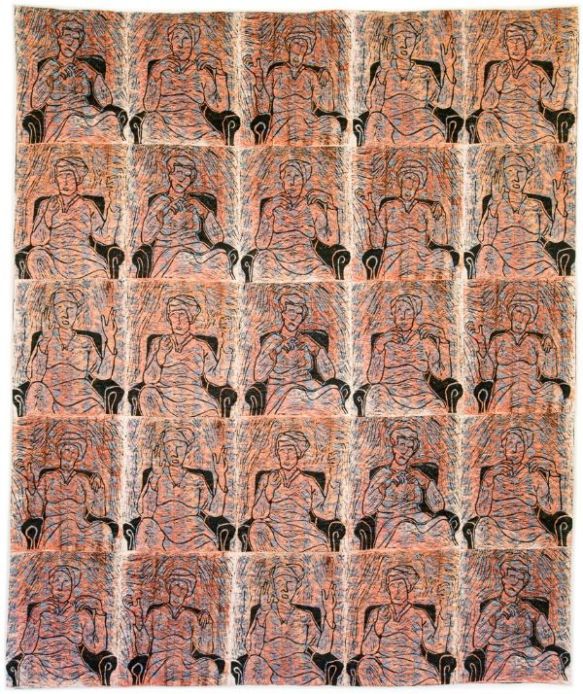
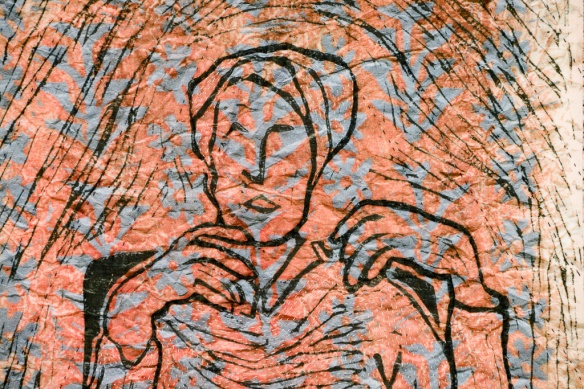 Thinking has not stopped me actually doing things. I continue to have at least one stitching project constantly on the go. My mind still throws up various ideas for ‘doodles’ which please me more or less, … but I feel somewhat limbo-ish nonetheless. I don’t think that the new images that I’m currently developing are actually moving my work forward – whatever that means. And I guess that’s what is bothering me: I cannot fathom at present what direction to look towards.
Thinking has not stopped me actually doing things. I continue to have at least one stitching project constantly on the go. My mind still throws up various ideas for ‘doodles’ which please me more or less, … but I feel somewhat limbo-ish nonetheless. I don’t think that the new images that I’m currently developing are actually moving my work forward – whatever that means. And I guess that’s what is bothering me: I cannot fathom at present what direction to look towards.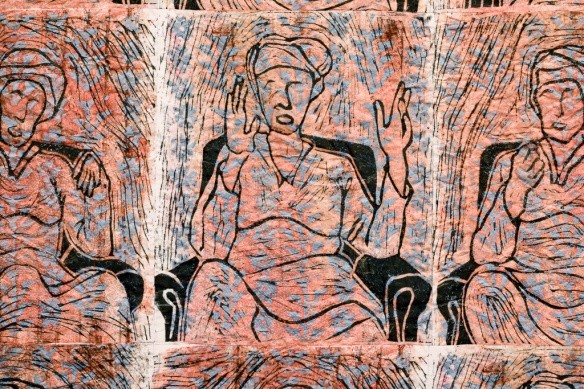 Meanwhile, a bit of organisation always helps. I am on a general life project to downsize possessions, partly so that as we become more decrepit and literally downsize to a smaller dwelling, we will not suddenly have to cope with a mountainous task. Today I decided to sort my threads.
Meanwhile, a bit of organisation always helps. I am on a general life project to downsize possessions, partly so that as we become more decrepit and literally downsize to a smaller dwelling, we will not suddenly have to cope with a mountainous task. Today I decided to sort my threads.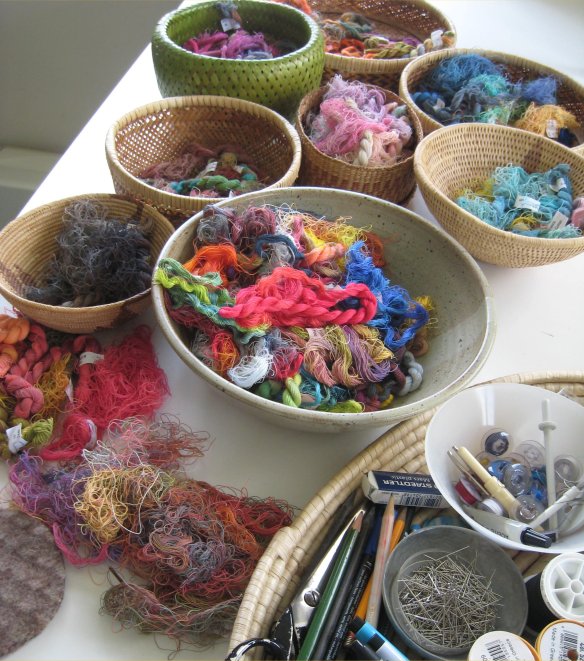
 Happy conjunctions present themselves when taking time over the sorting of stuff. One problem is that I have lived through several eras of need. For instance when I was working freelance in publishing, teaching abroad, and writing a publishing manual I needed filing drawers – not only for files (remember paper files anyone?), but for paper, flimsy, carbon paper, tippex (!), and other stationery. One cherished piece of filing furniture is my bright red Habitat set of drawers. Just right to accommodate threads.
Happy conjunctions present themselves when taking time over the sorting of stuff. One problem is that I have lived through several eras of need. For instance when I was working freelance in publishing, teaching abroad, and writing a publishing manual I needed filing drawers – not only for files (remember paper files anyone?), but for paper, flimsy, carbon paper, tippex (!), and other stationery. One cherished piece of filing furniture is my bright red Habitat set of drawers. Just right to accommodate threads.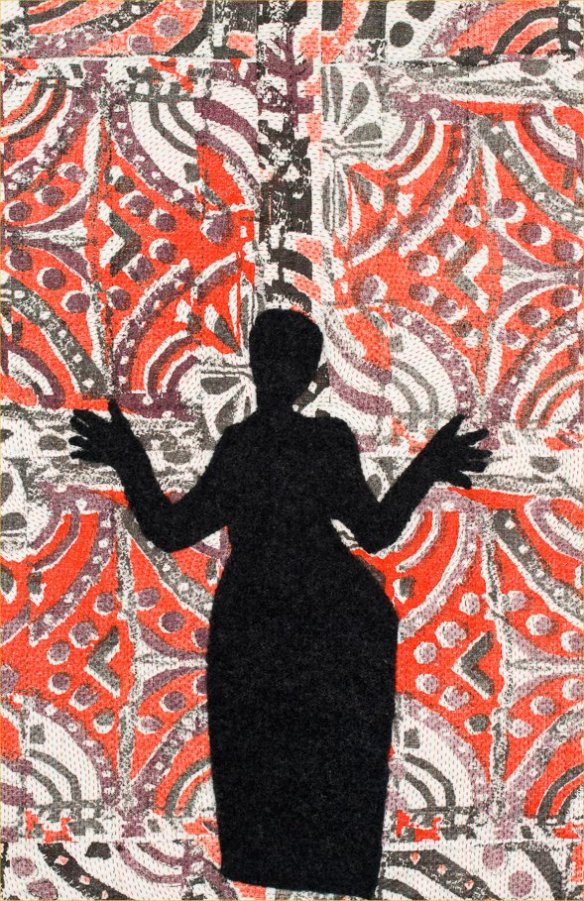
 In the early 2000s I made a few pieces which I described as brodages (collages, but stitched rather than stuck). They were one-offs, and more a kind of exercise of using up bits and pieces. Frieze above was made with vintage kimono fabric I’d bought on impulse in the USA, my experimental strip of painted silk, paper figures coloured with pastel, and a piece of wire mesh.
In the early 2000s I made a few pieces which I described as brodages (collages, but stitched rather than stuck). They were one-offs, and more a kind of exercise of using up bits and pieces. Frieze above was made with vintage kimono fabric I’d bought on impulse in the USA, my experimental strip of painted silk, paper figures coloured with pastel, and a piece of wire mesh.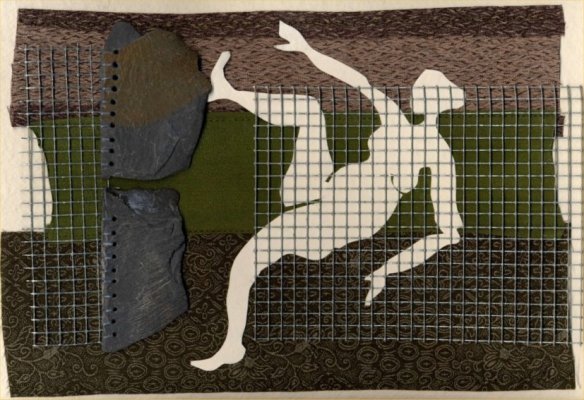 I used paper again in the figures for Hard place and Waving. They all arose from my thoughts after attending a workshop given by
I used paper again in the figures for Hard place and Waving. They all arose from my thoughts after attending a workshop given by 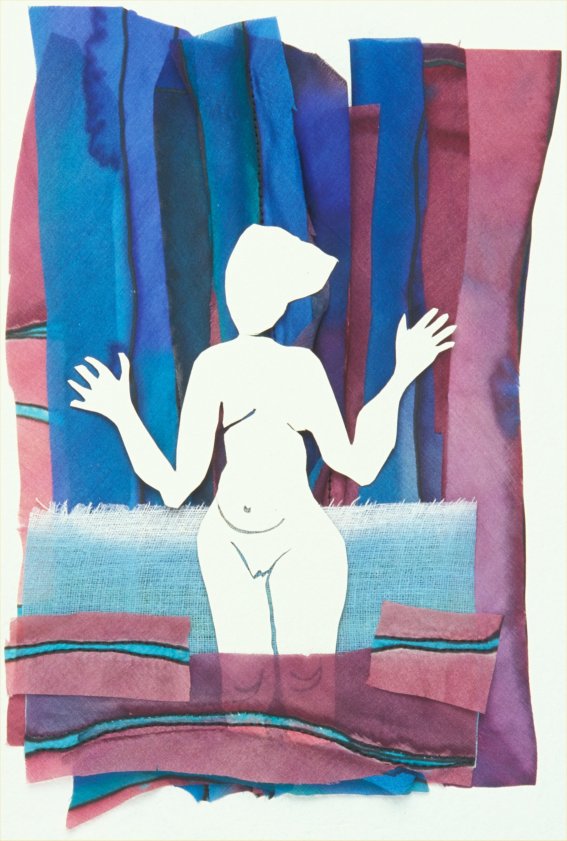
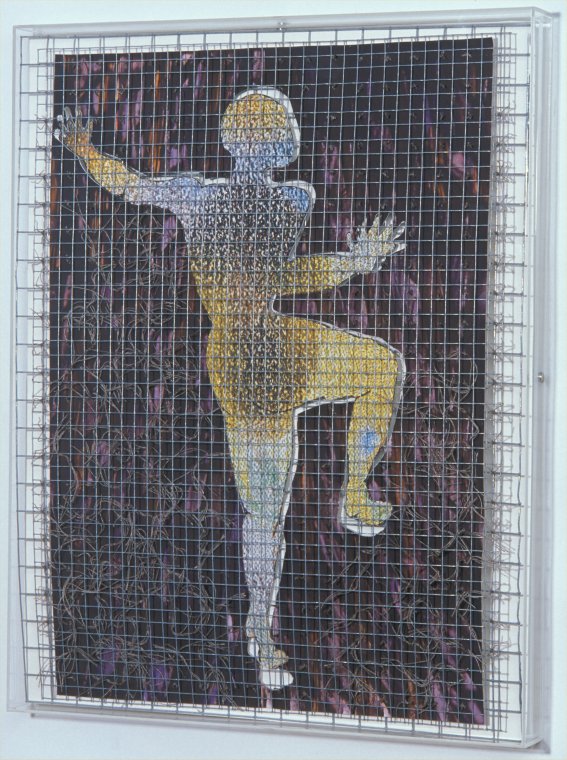
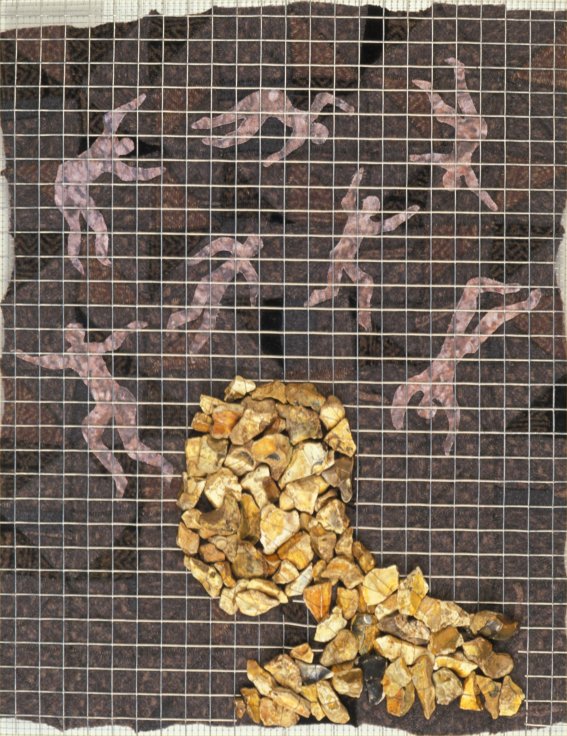
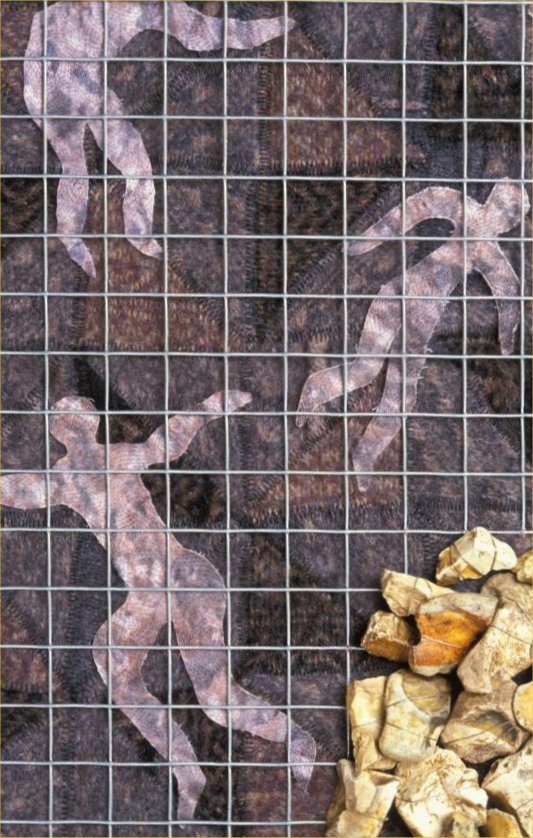
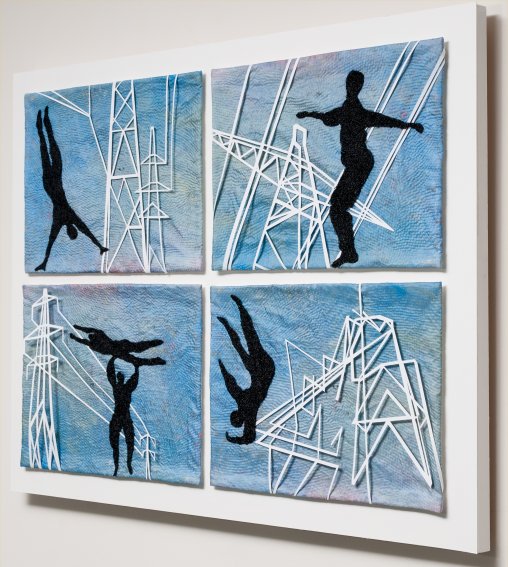
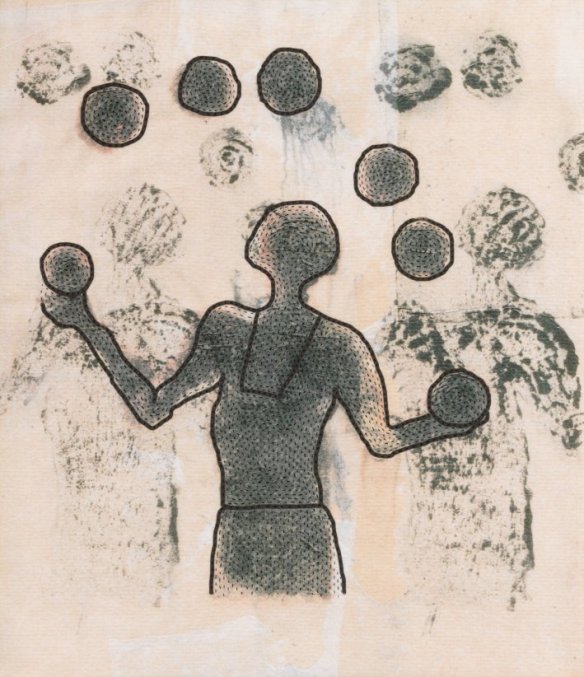 I have reached a point at which I feel the need for an assessment of what I’m doing, why, and of what I want to do. Amongst other things the work I’m making at present is too slow to keep up with my ideas, and that is having a dampening effect on the excitement of those ideas. The stitching element is taking up time which I want to devote to print making. And I still have vague ideas of trying out three dimensional work, somehow.
I have reached a point at which I feel the need for an assessment of what I’m doing, why, and of what I want to do. Amongst other things the work I’m making at present is too slow to keep up with my ideas, and that is having a dampening effect on the excitement of those ideas. The stitching element is taking up time which I want to devote to print making. And I still have vague ideas of trying out three dimensional work, somehow.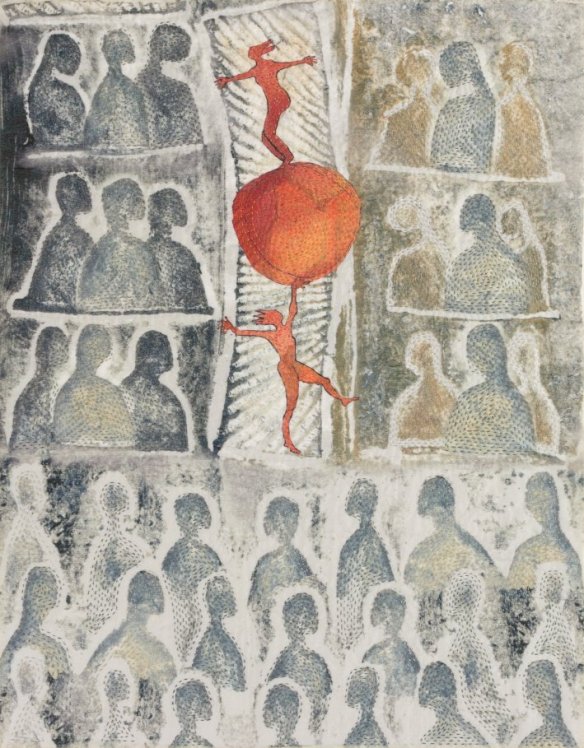 I now think I want to eschew external influences which are constraining. I’m giving up thinking that my work fails because it does not fit into a size category, for instance. Indeed I don’t want to think of being in any category at all.
I now think I want to eschew external influences which are constraining. I’m giving up thinking that my work fails because it does not fit into a size category, for instance. Indeed I don’t want to think of being in any category at all.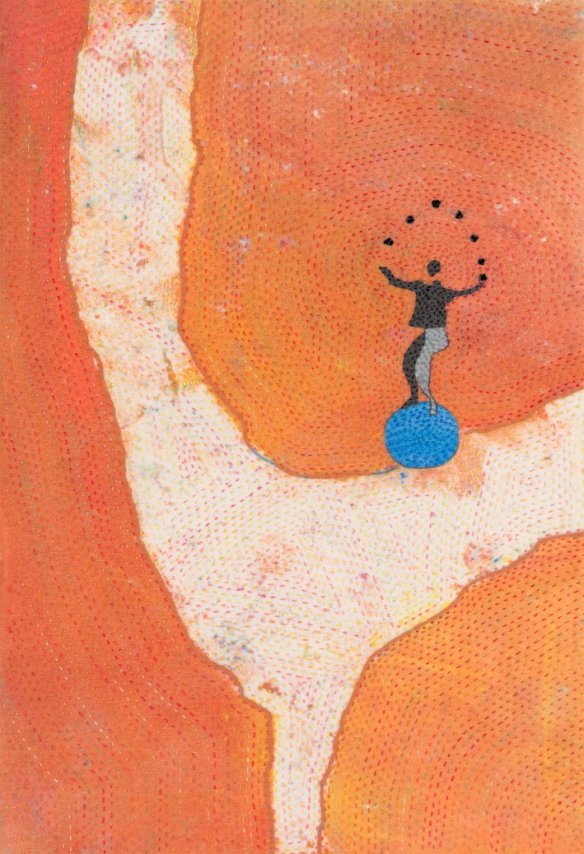 I think. Well, I have quite a bit to think about. I am certainly not thinking about giving up working in some way; it is an essential part of living as far as I’m concerned. But I have vaguely thought about giving up this and the
I think. Well, I have quite a bit to think about. I am certainly not thinking about giving up working in some way; it is an essential part of living as far as I’m concerned. But I have vaguely thought about giving up this and the 